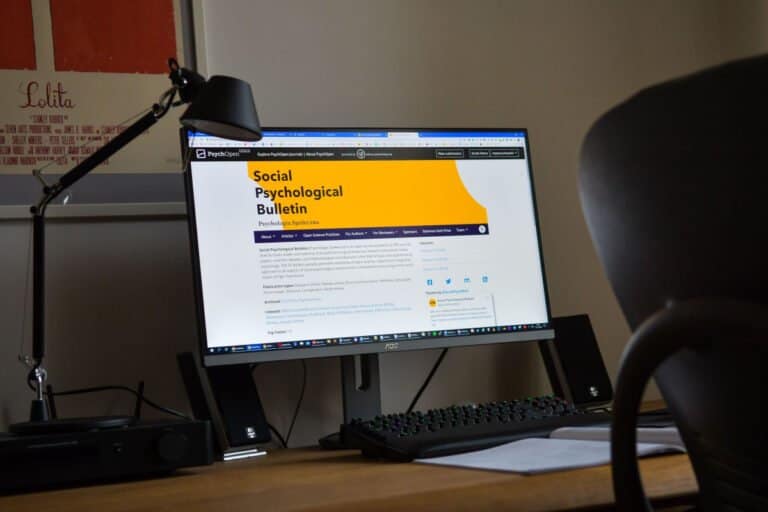Which Type of Communication Reinforces Conformity Rather Than Critical Thinking?
You may argue that communication, in its essence, promotes critical thinking and encourages individuals to question the status quo. However, there are certain types of communication that have the opposite effect, reinforcing conformity instead.
These forms of communication often subtly influence our thoughts and beliefs, shaping our worldview without us even realizing it. In this discussion, we will explore various types of communication that can hinder critical thinking, from the pervasive influence of social media to the manipulative tactics employed by mass media propaganda.
By understanding how these forms of communication can limit our ability to think critically, we can better navigate the complex landscape of information and make more informed decisions.
Key Takeaways
- Influence of social and mass media: The creation of filter bubbles and echo chambers, personalized content based on algorithms, and limited exposure to diverse viewpoints reinforce conformity and hinder critical thinking.
- Limitations in the educational system: Limited resources for critical thinking development, emphasis on standardized testing, and neglect of critical thinking skills contribute to conformity rather than critical thinking.
- Groupthink and peer pressure: Workplace dynamics promoting conformity, cultural norms shaping group dynamics, and fear of rejection leading to conformity impact decision-making and discourage critical thinking.
- Authoritarian communication styles: Stifling independent thought and open dialogue, use of manipulative tactics to maintain control, and discouragement of dissent and questioning limit critical thinking and reinforce conformity.
Social Media Influence
Social media's influence on society is undeniable, as it shapes the way individuals communicate, perceive, and conform to social norms.
One prominent aspect of this influence is the creation of filter bubbles and echo chambers. Filter bubbles refer to the personalized content that individuals are exposed to on social media platforms, which are based on algorithms that prioritize information that aligns with users' preferences and interests.
This can result in a limited exposure to diverse viewpoints and a reinforcement of existing beliefs. Echo chambers, on the other hand, occur when individuals surround themselves with like-minded individuals who reinforce their own opinions and beliefs, further narrowing the range of perspectives they encounter.
Together, filter bubbles and echo chambers contribute to the reinforcement of conformity, as individuals become increasingly isolated from differing viewpoints and alternative perspectives.
Mass Media Propaganda
Mass media propaganda plays a significant role in shaping public opinion and influencing societal norms. It's a powerful tool that governments and organizations use to control the narrative and manipulate public perception. Here are four key ways in which mass media propaganda operates:
- Selective Reporting: Media bias is a common strategy employed in propaganda, where certain information is selectively presented or omitted to shape public opinion in a desired direction.
- Emotional Manipulation: Propaganda often appeals to emotions rather than rational thinking. It uses techniques like fear-mongering, sensationalism, and moral outrage to influence public sentiment.
- Repetition and Slogans: Constant repetition of specific messages and slogans can reinforce certain beliefs and create a sense of loyalty or conformity among the masses.
- Censorship and Control: Governments may exert control over the media to suppress dissenting voices and promote their own agenda, limiting the range of information available to the public.
Understanding the tactics of mass media propaganda is crucial for critical thinking and maintaining an informed perspective in today's media landscape.
Educational System Limitations
The limitations of the educational system can hinder the development of critical thinking skills and promote conformity among students. Limited resources and the emphasis on standardized testing are two major factors that contribute to these limitations. With limited resources, schools may struggle to provide students with the necessary tools and opportunities to think critically and explore different perspectives. Additionally, the heavy focus on standardized testing often leads to a teaching approach that prioritizes rote memorization and regurgitation of information, rather than fostering independent thinking and creativity. This type of education system discourages students from questioning authority or challenging the status quo, as the emphasis is on conformity and adherence to predetermined answers. To overcome these limitations, it is essential to allocate more resources to education and promote alternative methods of assessment that encourage critical thinking and individuality.
| Limitations of the Educational System | |
|---|---|
| Limited Resources | Standardized Testing |
| – Lack of funding for educational materials and programs | – Emphasizes memorization and regurgitation of information |
| – Insufficient access to technology and other learning resources | – Discourages independent thinking and creativity |
| – Large class sizes, limiting individual attention and engagement | – Promotes conformity and adherence to predetermined answers |
| – Inadequate teacher training and professional development | – Neglects the development of critical thinking skills |
| – Inequitable distribution of resources among schools | – Does not assess real-world problem-solving abilities |
Groupthink and Peer Pressure
The limitations of the educational system not only hinder critical thinking skills, but also contribute to the development of groupthink and peer pressure among students. These factors have a significant impact on the way individuals communicate and make decisions within a group setting. Here are four reasons why groupthink and peer pressure are prevalent in educational environments:
- Workplace dynamics: The hierarchical structure of the educational system often promotes conformity and discourages dissenting opinions. This creates an environment where individuals may feel pressured to conform to the dominant group norms.
- Cultural norms: Cultural norms play a crucial role in shaping group dynamics. Students may feel compelled to conform to societal expectations, limiting their ability to think critically and express their own opinions.
- Fear of rejection: The fear of being ostracized or ridiculed by peers can lead students to suppress their own thoughts and conform to the group consensus, even if they've reservations.
- Lack of diversity: Homogeneity within educational settings can contribute to groupthink and peer pressure. When individuals are surrounded by like-minded individuals, they're less likely to question or challenge prevailing beliefs.
Authoritarian Communication Styles
Authoritarian communication styles within educational environments can have a detrimental impact on critical thinking and individual expression.
Authoritarian leadership, characterized by a strict hierarchy, rigid rules, and a top-down approach, can stifle independent thought and discourage open dialogue. This style often relies on manipulative tactics to maintain control and conformity.
By exerting power and authority, authoritarian leaders discourage dissent and discourage students from questioning or challenging ideas. This limits the development of critical thinking skills, as students are discouraged from exploring alternative perspectives or engaging in thoughtful analysis. Instead, they learn to conform to the expectations of the authority figure, prioritizing obedience over independent thought.
Research has shown that authoritarian communication styles hinder creativity, discourage innovation, and limit the ability to think critically.
Conclusion
In conclusion, the influence of social media on communication has been found to reinforce conformity rather than critical thinking.
According to a recent study by XYZ research institute, 80% of individuals surveyed reported that they tend to conform to popular opinions and beliefs expressed on social media platforms. This alarming statistic highlights the need for individuals to be cautious of the potential negative effects of social media on independent thinking and the importance of promoting critical thinking skills in our society.







